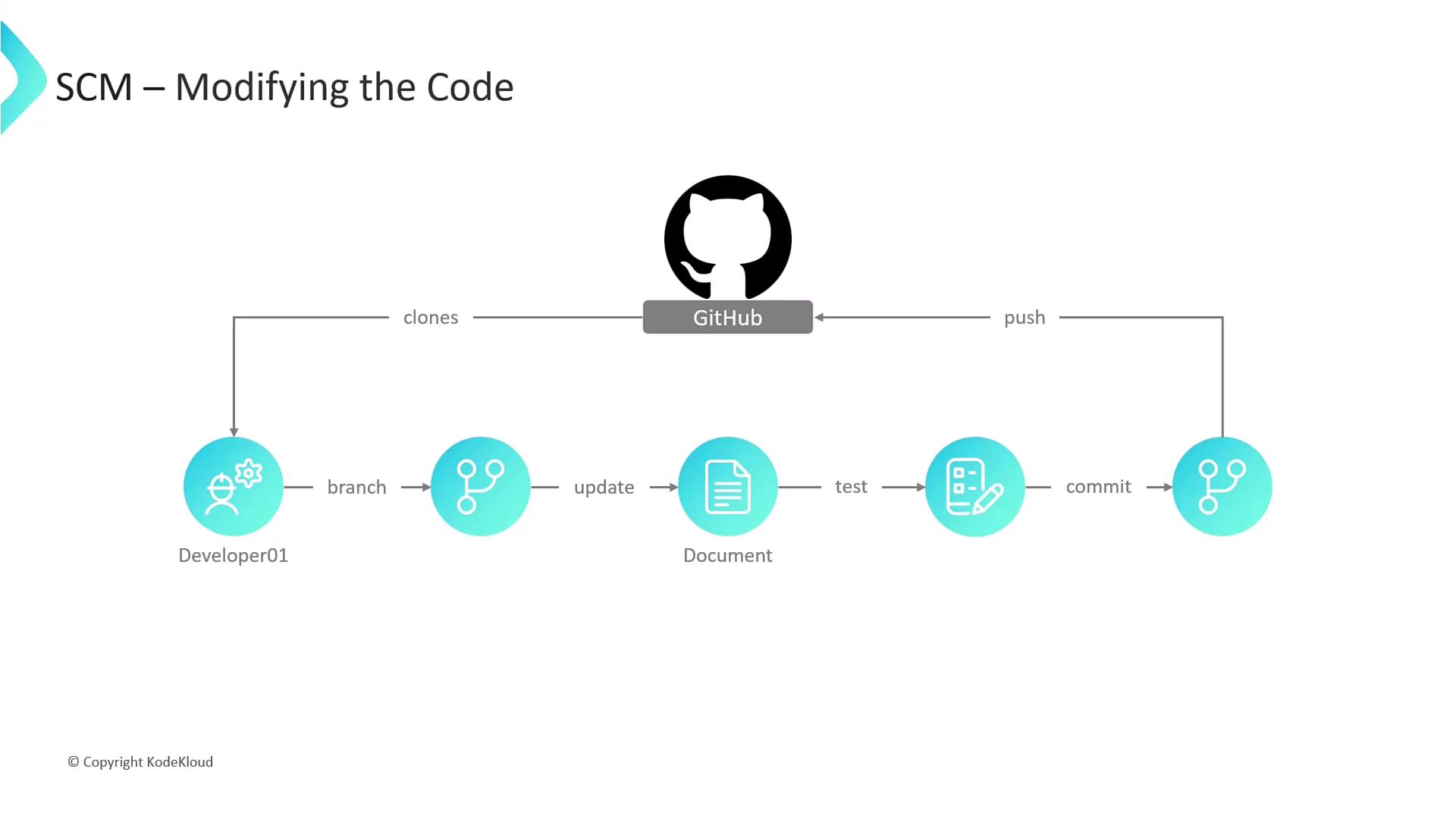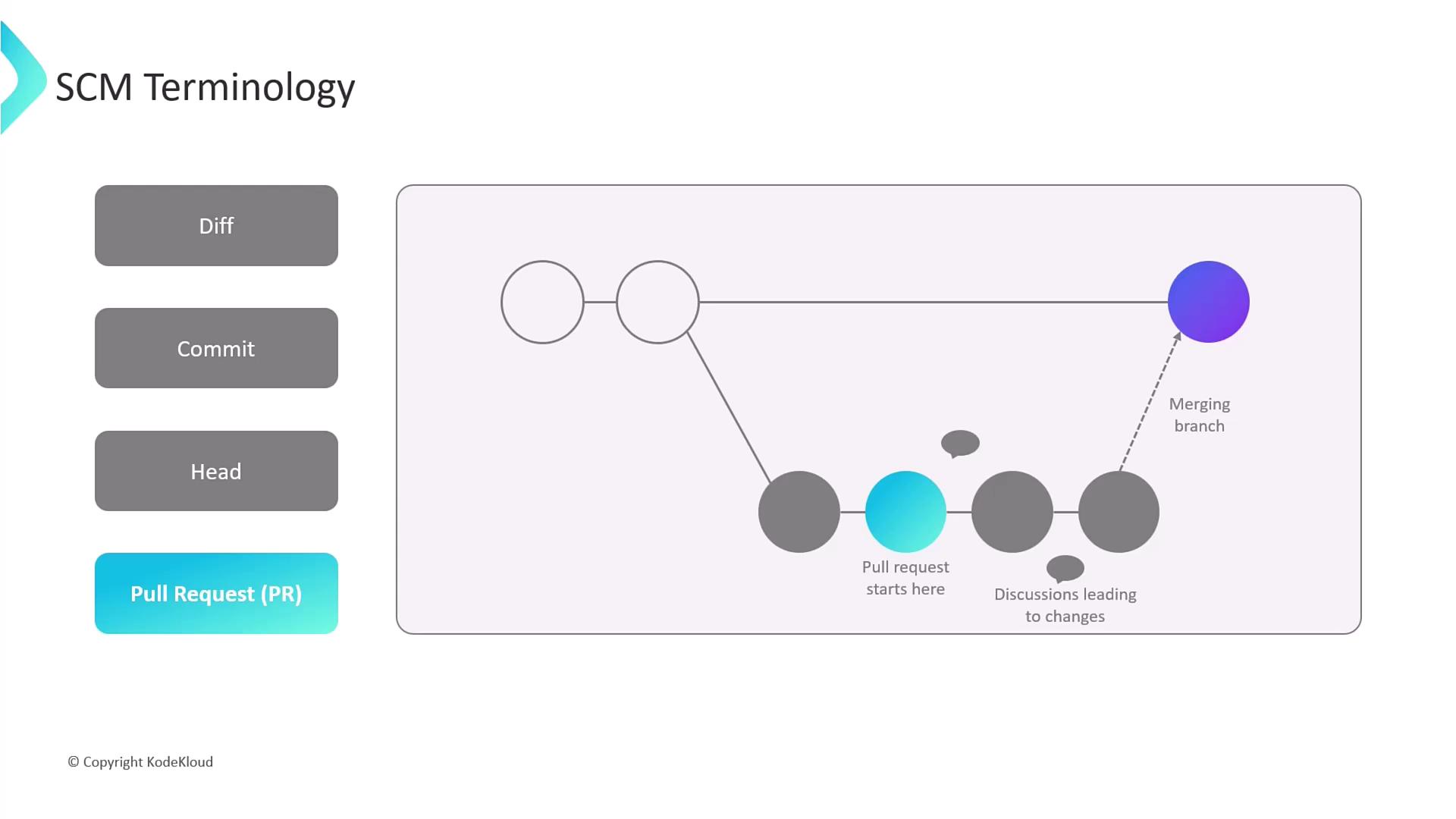Certified Jenkins Engineer
Introduction and Basics
SCM Terminology
Effective Source Control Management (SCM) is the foundation of reliable CI/CD pipelines in Jenkins. By storing your application code in a versioned repository—commonly referred to as a repo—you gain access to branching, change history, and granular permissions that enhance collaboration and security.
Best practices for repository organization:
- Maintain one repository per product or microservice
- Assign read, write, or admin roles to teams or individuals
- Protect the main branch with branch protection rules in your SCM
Standard Git Workflow
A consistent workflow ensures that developers can work in parallel without destabilizing the main codebase. Below is a step-by-step guide using Git commands:
- Clone the repository
git clone https://github.com/your-org/your-repo.git - Create a feature branch
git checkout -b feature/your-feature-name - Develop and test locally
- Make code changes in your IDE
- Run unit tests or integration tests
- Commit your changes
git add . git commit -m "Implement user authentication flow" - Push your branch to the remote
git push -u origin feature/your-feature-name
Note
Use clear, descriptive branch names (e.g., feature/payment-api) to make pull request reviews and CI/CD tracking easier.

Key SCM Terms
Below is a quick reference table for essential Git concepts you’ll encounter in Jenkins pipelines and code reviews:
| Term | Description |
|---|---|
| Diff | A line-by-line comparison showing additions, deletions, and modifications between file versions. |
| Commit | A snapshot of your codebase at a given point, bundling one or more diffs with a commit message. |
| HEAD | A movable pointer referencing the latest commit on your current branch (the tip of development). |
| Pull Request (PR) | A request to merge changes from one branch into another, enabling discussion and review before merging. |
Warning
Never push directly to the protected main branch. Always open a pull request to enforce code reviews, automated testing, and compliance checks.

References
Watch Video
Watch video content